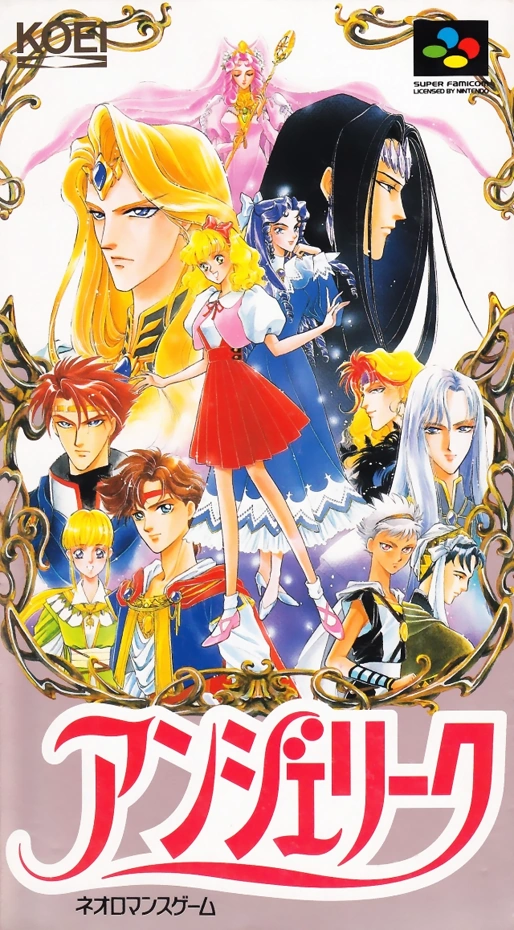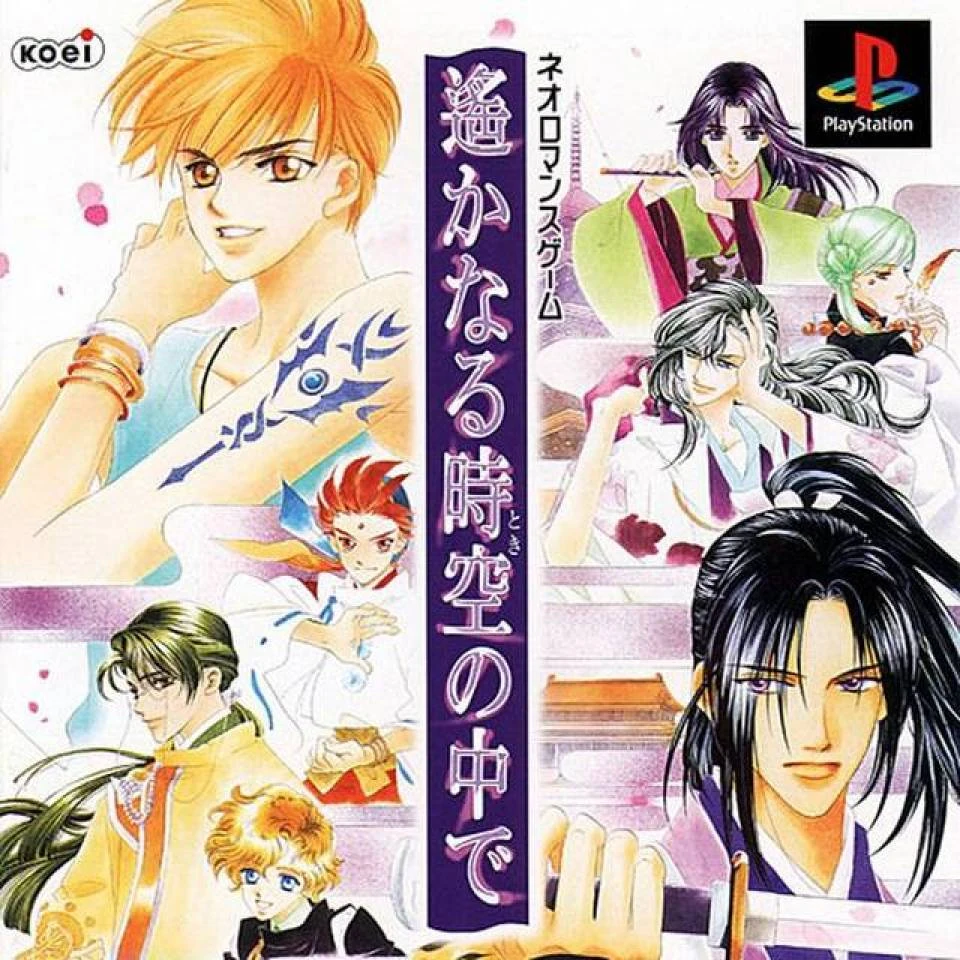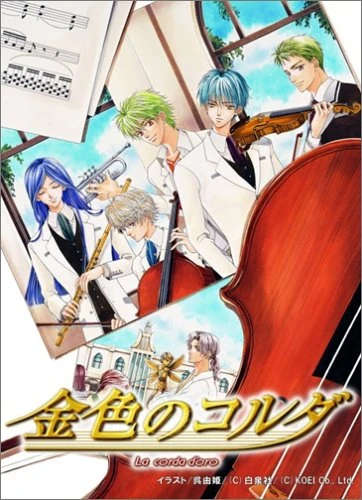Video Games for Girls - Ruby Party and the Invention of the Otome Game
- kamikarmiya
- Apr 27, 2024
- 7 min read
Updated: May 5, 2024
Like a lot of girls, I enjoyed video games for a while as a kid, before mostly falling out of the medium as I grew older. The vast, vast majority of video games released in English are very male-centric, and I felt extremely alienated by the games you would see at the game store. Beyond the comfortable childhood co-ed Nintendo classics, I only sporadically played games I found more welcoming, like Harvest Moon, which has long included a female player character and a light dating sim element alongside its relaxing farm life. Peripherally, I became more aware of the fact that a lot of shoujo titles have video game spin-offs in Japan, and that there is a huge genre of games for girls in Japan, but tried them out only rarely. Titles like Sailor Moon, Mermaid Melody, Precure, and Hamtaro all have video game spin-offs.
Only very rarely did any titles for girls get released in English; the Hamtaro games have been, and a few, rare trickles of otome games for young girls have been released in English (such as two games about figure skating, and one about ballet). But what are otome games? Arguably, the bulk of 'serious' video games for girls and women in Japan are otome games. These games tend to be very story-heavy, with many being primarily visual novels, and also feature the ability to choose a romantic route with your preferred bachelor. They're dating sims, but...shoujo, if you will.
Ruby Party
The genre of otome games originates back in the early 90s at Koei. Erikawa Keiko, wife of the company founder and then-president, worked there as well developing games, and made a concentrated effort to recruit women into the company. They eventually formed Ruby Party, a sub-studio which went on to make Angelique, the first otome game.
As Erikawa tells it, there was significant resistance to making a video game aimed exclusively at girls, but she was firm: "there are just as many women in the world as men". Recognising that a female audience, long-alienated by the world of gaming, weren't regular gamers, they developed Angelique with accessibility in mind. Envisioning it as a 'girl's Nobunaga's Ambition' (Koei's flagship strategy game), they made a simplified strategy game with a shoujo aesthetic, set in a fantasy/scifi world with a strong European vibe. Yura Kairi, an up-and-coming manga artist, was brought on to do the character designs, and she went on to illustrate the 11-volume manga adaptation. Unfortunately, this has never been officially translated into English, and the fan translation only goes up to volume 5.
Pictured: SNES Cover art, Gameplay screencap (from the GBA port), painting of the female leads by Yura Kairi, and the cover of volume 1 of the manga
In Angelique, the universe is ruled by a woman, who watches over its development with the aide of the nine guardians (shugosei). When it is time for a new queen to take over, two girls, Angelique and Rosalia, are selected to compete for the position. As a test, they must each watch over one of two twin continents on a new planet, guiding their development as life takes hold on this world and evolves. As you play, you also get to know the nine guardians, and can choose to go on dates with them, and seek out a romantic ending with the bishounen of your dreams. Be warned, though: you can either become the new queen, or have a romantic ending. You cannot do both.
I actually find this feature very interesting, and think it was probably intended as a relatable theme for both the women working at Koei at the time and their intended audience: very often, women are forced to choose between marriage/family and career, rather than being able to have both. Personally, I don't think this feature in Angelique was meant to enforce this; simply to reflect the reality which so many women faced, and present both choices as equally important, dependent on what you want out of life, not what others push on you.
Angelique was, from the start, a multimedia project, with various drama CDs, character image songs, and cute goods included as bonuses to the special edition boxes for the game. Some boxes included puzzles, music boxes, art postcards, a toothbrush set (?), stickers, and more. This would be extremely familiar to girls who grew up reading manga magazines and collecting the furoku gifts included with them.
Image source: Ebay listing for Sega Saturn Premium Box
After the initial 1994 SNES release, Angelique has been released on the Sega Saturn, PC-FX, Windows, Playstation and Gameboy Advance. Angelique Duet, a remix which adds the ability to play as Ange's rival, Rosalia, and choose a new route where you befriend your rival.
For more information on Ruby Party, Angelique, and some preview gameplay, I highly recommend this video by Amelie Doree. You can also watch a Japanese let's play of Angelique Duet on Youtube.
Many sequels and spin-offs have been produced, but I wish to now turn to Angelique Tenkuu no Requiem, released in 1998. This was the first RPG from Ruby Party, inspired by fan demand after the popularity of RPGs like Final Fantasy. This game received an OVA adaptation; the first anime adaptation of a Ruby Party title.
The Expanding Lineup
The next major series from Ruby Party was Harukanaru Toki no Naka de, an RPG featuring a teenage girl from modern Japan who is pulled through time to the Heian era and becomes the miko of Ryuujin, the dragon god. This was a very popular genre of shoujo historical/fantasy in the 90s, with many titles like Fushigi Yuugi, Red River, Kanata Kara, The Vision of Escaflowne, and Inuyasha (admittedly a shounen, but same concept) being only some of the most popular examples. As was the case with Angelique, a newcomer to shoujo manga was brought on to do the character designs: Mizuno Tooko, who went on to draw the 17-volume manga adaptation, and has continued to work on character designs and manga adaptations for subsequent titles in the series.
Harukanaru is a more story-heavy game than Angelique, with the first title exploring many social facets of the Heian era, and a conflict between the people of Kyou (the ancient name for the capital, Kyouto) and the Oni Clan, a minority who migrated to Japan some centuries ago and are the victims of frequent persecution as a result. Desiring revenge for their treatment, the leader of the clan casts a curse on the capital and stirs up many onryou (resentful spirits) to aid him in his cause. The first anime adaptation was a two-episode OVA, Ajisai Yumegatari (2002), which served primarily as a tie-in for fans of the game; with only two episodes, it is not particularly concerned with explaining the story beyond the bare minimum, and instead simply tells the tale of a specific encounter with a resentful spirit. I would only recommend watching it when you're already familiar with the story.
Original PS1 cover art and gameplay screencaps.
After this the series was greenlit for a full 26-episode anime adaptation, titled Harukanaru Toki no Naka de Hachiyoushou (2004). This title was my introduction to the series, and to Ruby Party's works in general, and I won't talk too excessively about it here, lest I gush too much and turn this into a post about Hachiyoushou instead! If you're at all familiar with the Chinese fantasy genre of Xianxia, you'll understand what I mean when I say that this is basically the Japanese version of it. The setting is a real historical one (or at least an alternate fantasy history), the magic is all based on real mythology and spiritual practises, and it even features madou/modao! This anime is particularly notable because it chose to include a romance: one between Akane, the female lead, and Akram, the leader of the Oni Clan. The two have a very Heian courtship style series of clandestine meetings in the early series, and Akane spends the entire series conflicted over her feelings for Akram and the increasingly-dark places that his desire for revenge against the people of Kyou takes him.
OK, I will stop. All of the anime adaptations of Harukanaru Toki no Naka de are worth a watch, and I honestly think that they're the best Ruby Party anime- even the best anime adaptations of otome games, period. But more on that another time! Harukanaru has seen the most game releases, counting both mainline games, sequels, and spin-offs. As I write, the series has gone all the way up to the seventh main game. After the third game, the series bid farewell to the Heian era and began to move on to other eras; notably, 6 is set in the Taisho period, and engages quite a bit with the fact that Japan was moving towards a military dictatorship during that era, despite the coat of gloss and progress which many stories set during the period like to focus on.
The final main series from Ruby Party is Kiniro no Corda (La Corda d'Oro). It is a simulation game featuring classical music, with the protagonist attending school in the modern day. (I have to admit that I have not attempted any of these games yet, since the first game has a reputation for its 'crushing difficulty' and I am rather leery of tackling a difficult game in my second language.) Once again, a shoujo manga artist worked on the character designs, and drew the manga adaptation. The first manga has been translated into English by Shojo Beat, and the volumes are still available at reasonable prices, if you want to read it. It also has a 26-episode anime, which is available with English subtitles.
All Ruby Party games are released under the name Neo Romance, and you can read more about all of the games released under this name here: https://koei.fandom.com/wiki/Neoromance_series
Ruby Party are still giants in the otome game genre which has emerged since the initial release of Angelique in 1994. One thing I find notable about their games is that they combine traditional gaming genres, such as strategy, simulation and RPG, with dating sim and visual novel elements. Many later otome games from other studios are primarily visual novels, though this is certainly not a hard and fast rule. Unfortunately, none of Ruby Party's games have ever been translated into English, whether officially or via fan translation. Unless or until that changes, the pioneers of the otome genre are only accessible to those who can play the games in Japanese. Here's to hoping that changes in future!
I actually have quite a collection of Ruby Party games, manga, CDs and anime, and am going to be talking about their games in particular on this blog quite a lot. That is part of why I decided to make an introductory post about them; as well, I think the development of a genre of games specifically for girls, and so closely tied to shoujo, is incredible. Just as the pioneering women of the 60s and 70s turned shoujo manga into a genre primarily led by female creators, so did Ruby Party with the creation of the otome genre.










































Comments